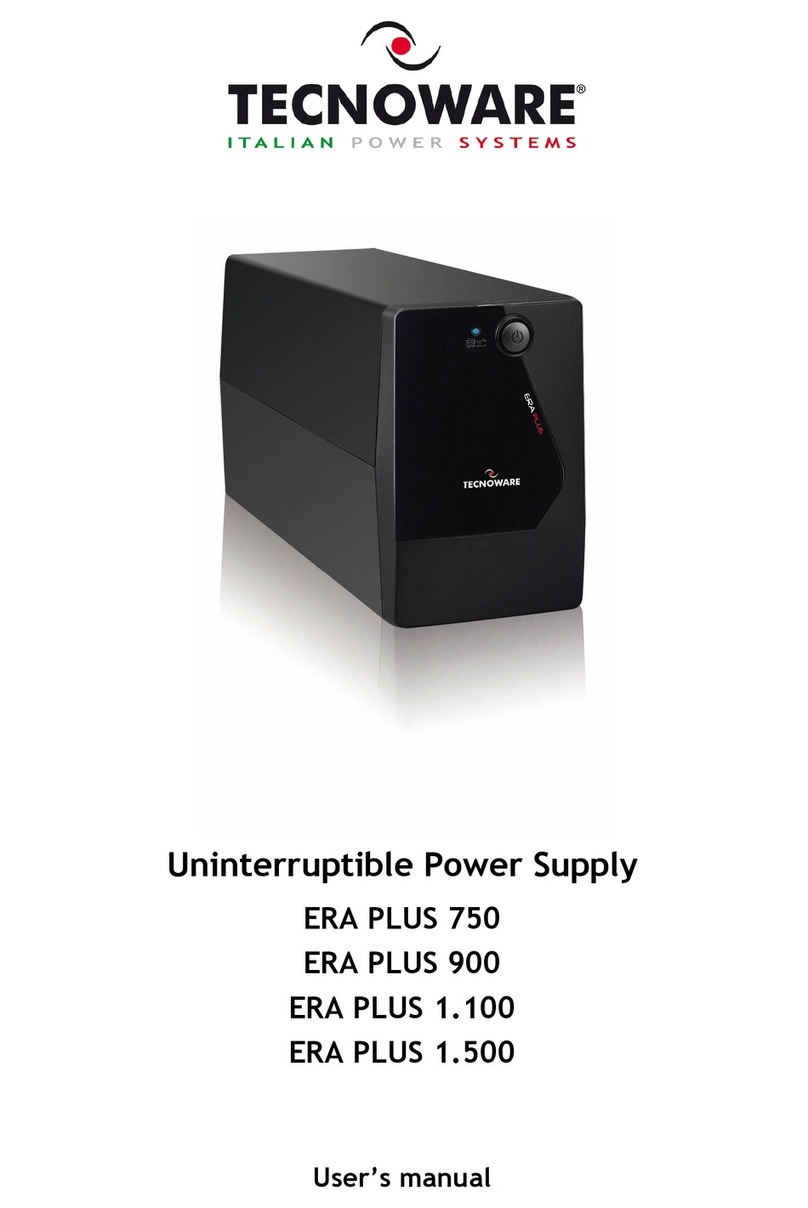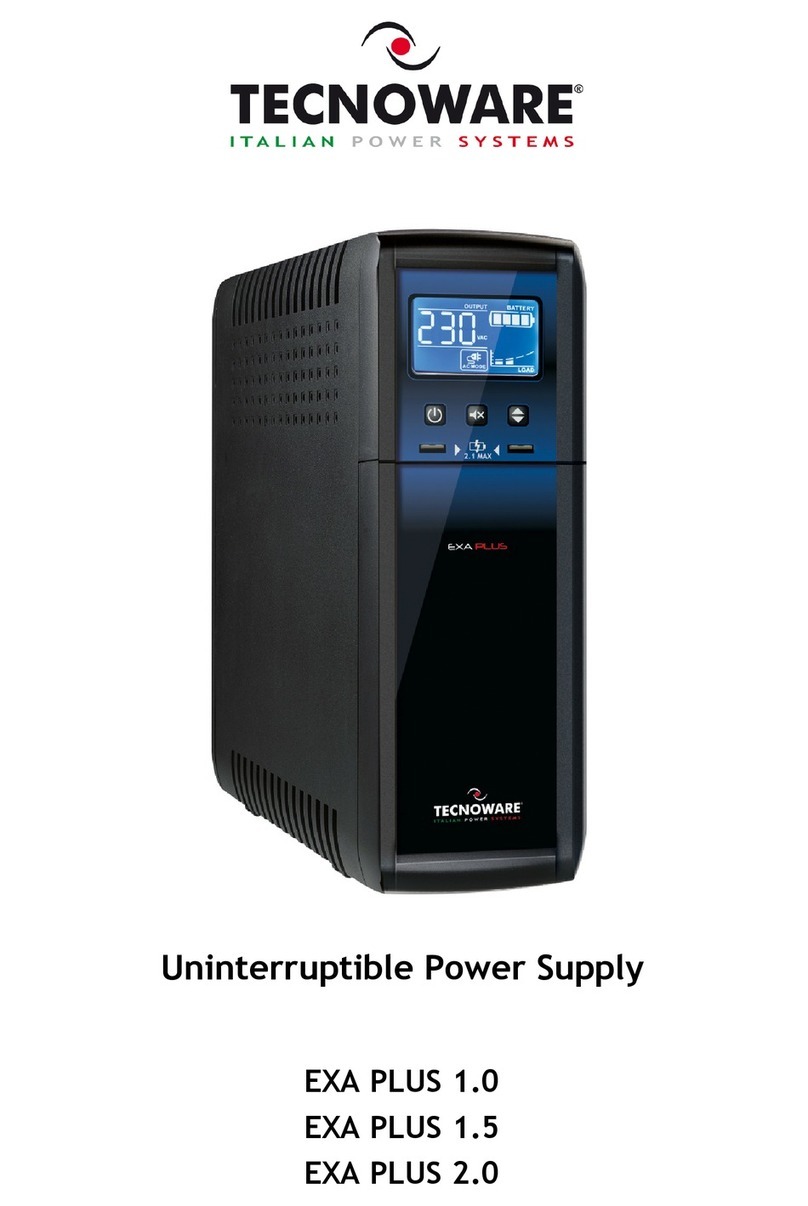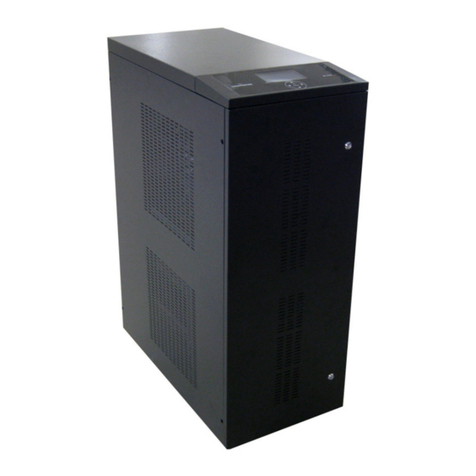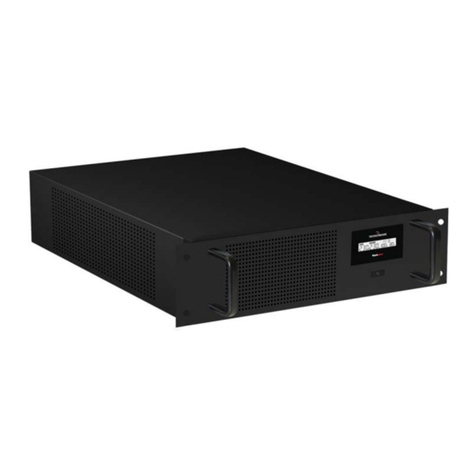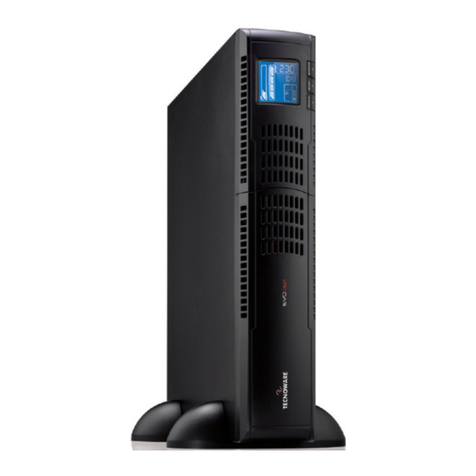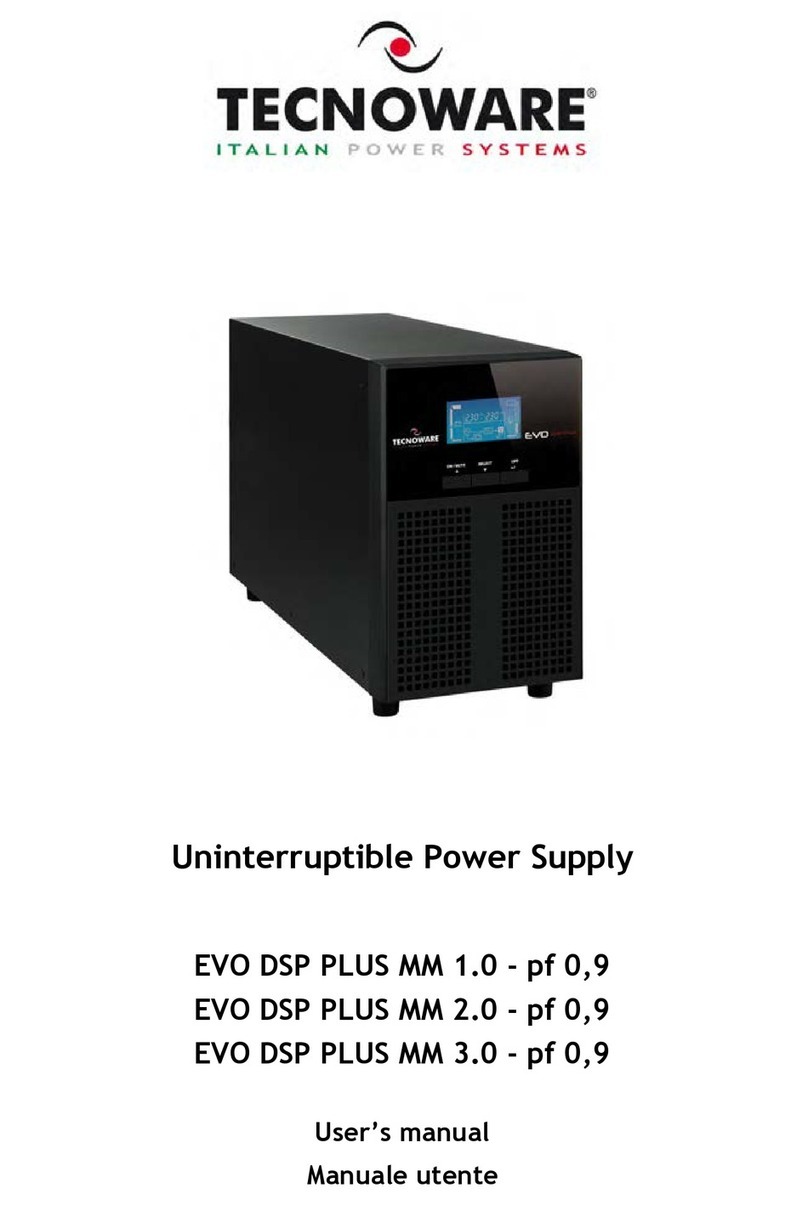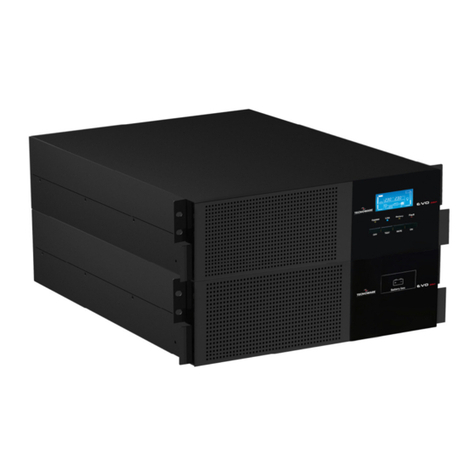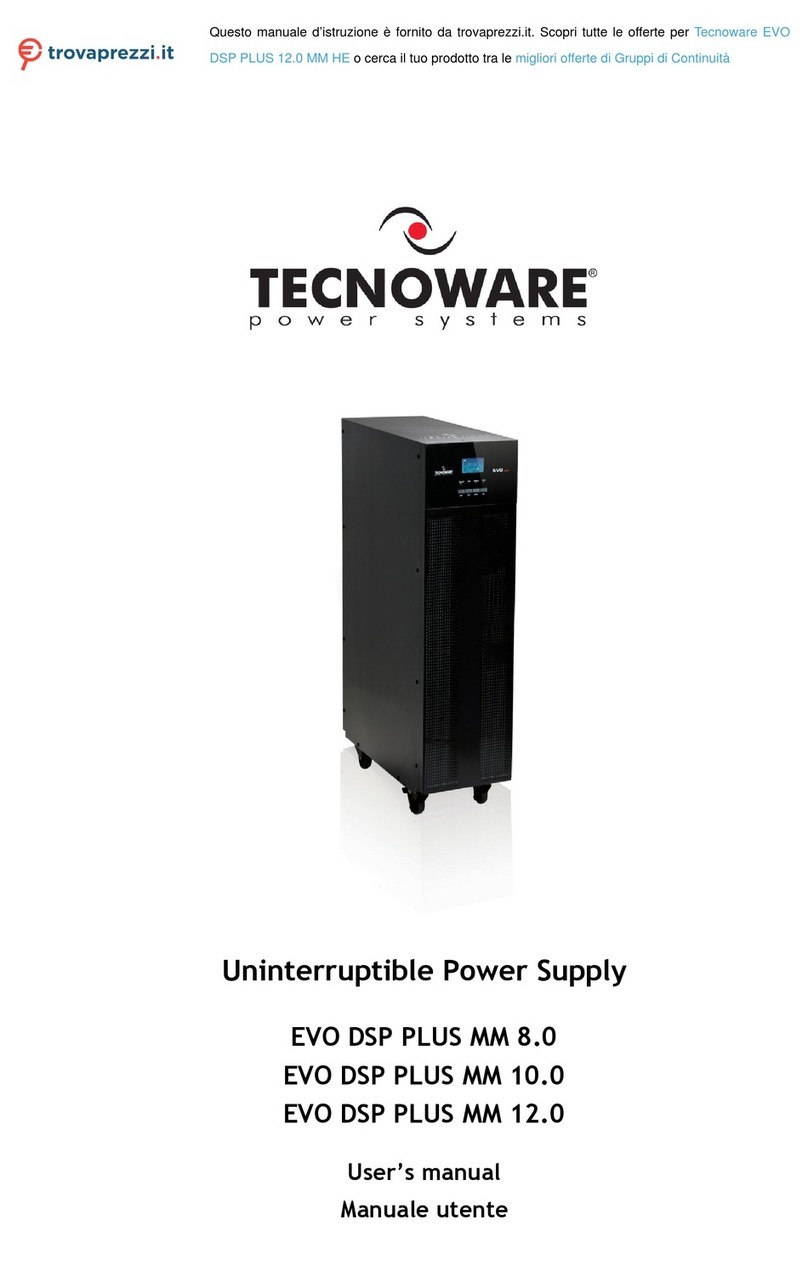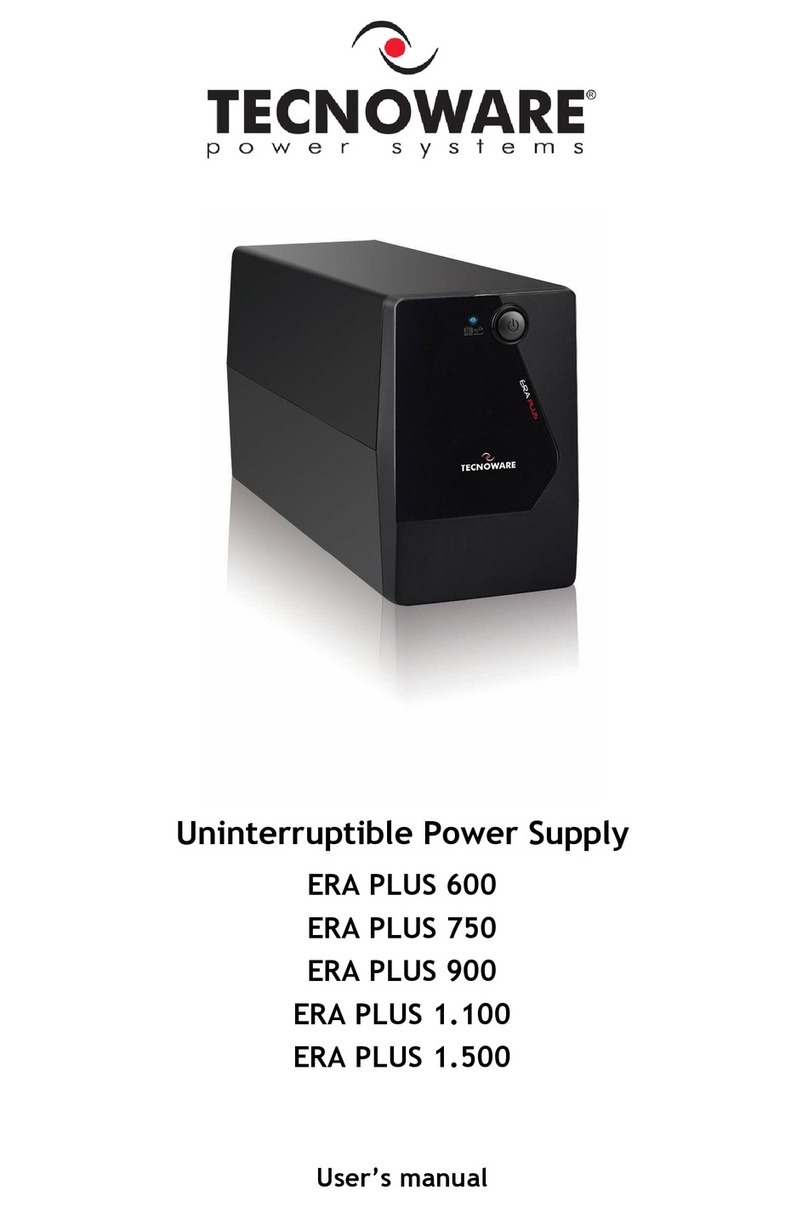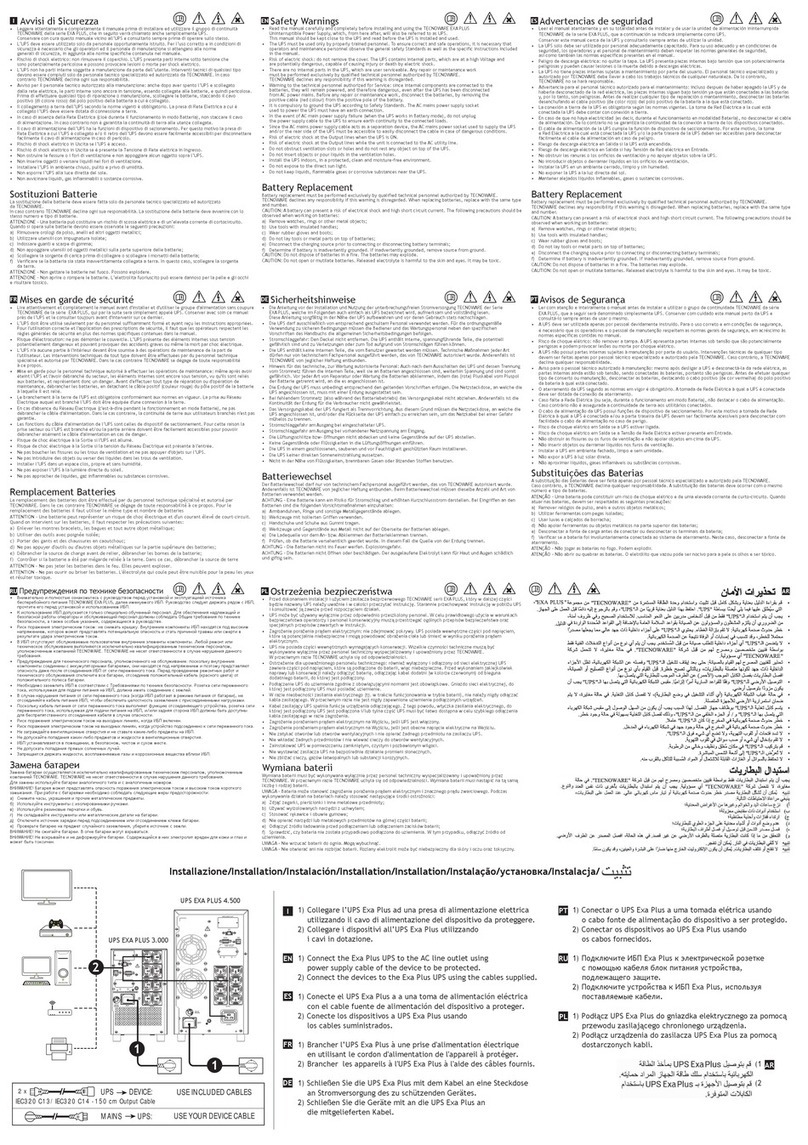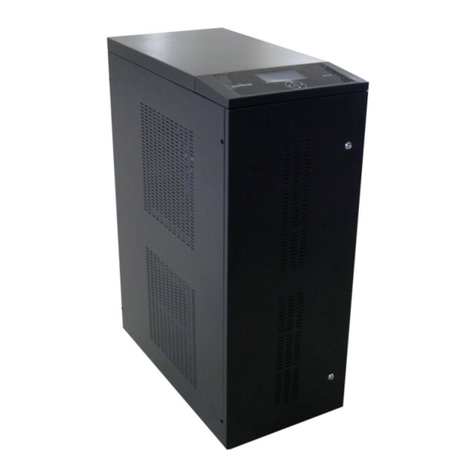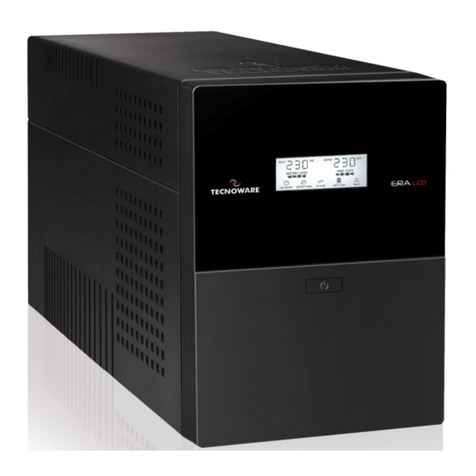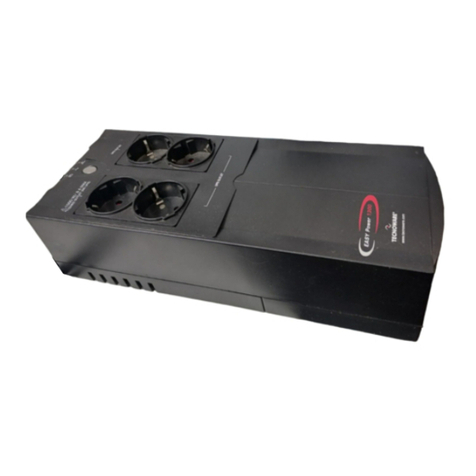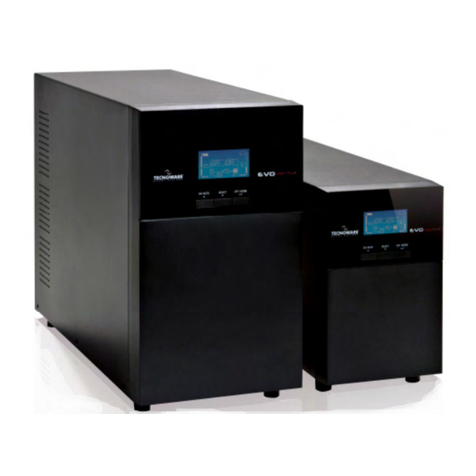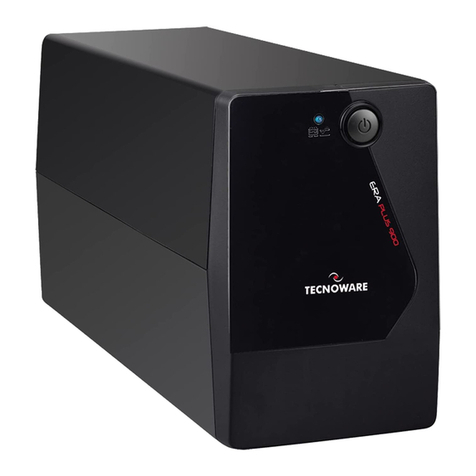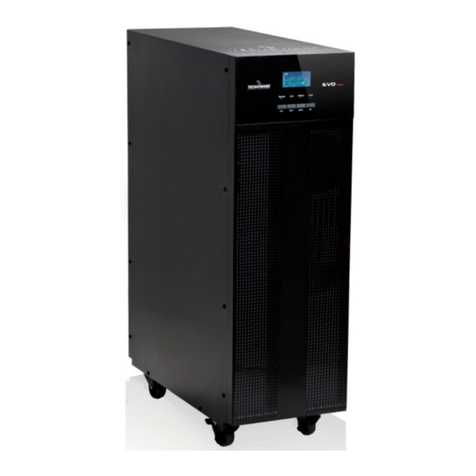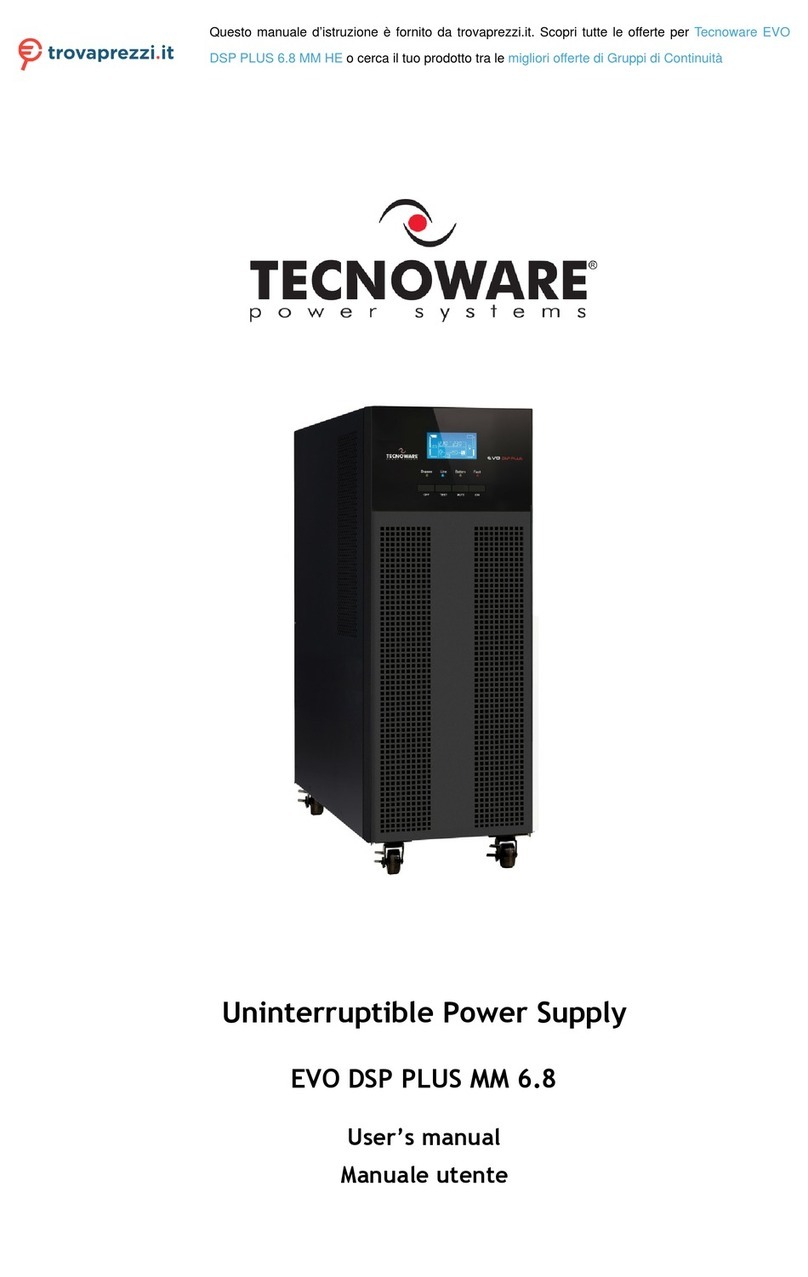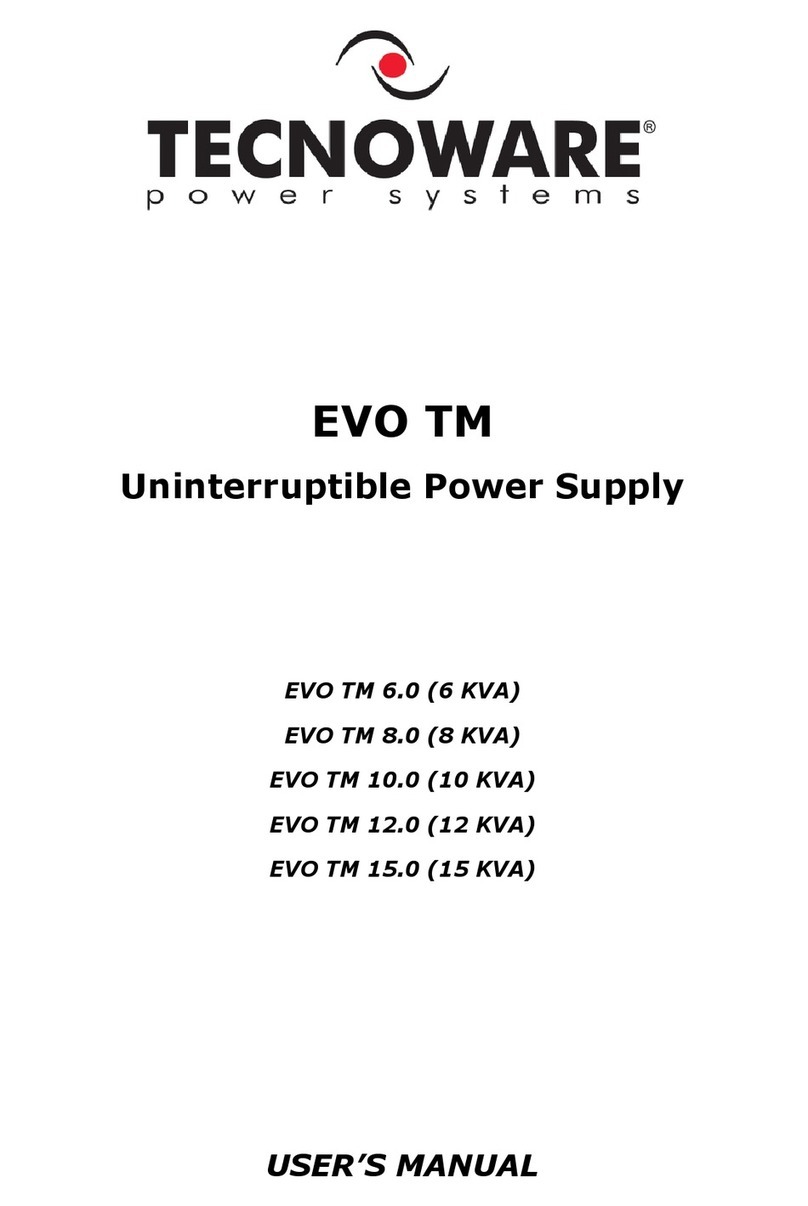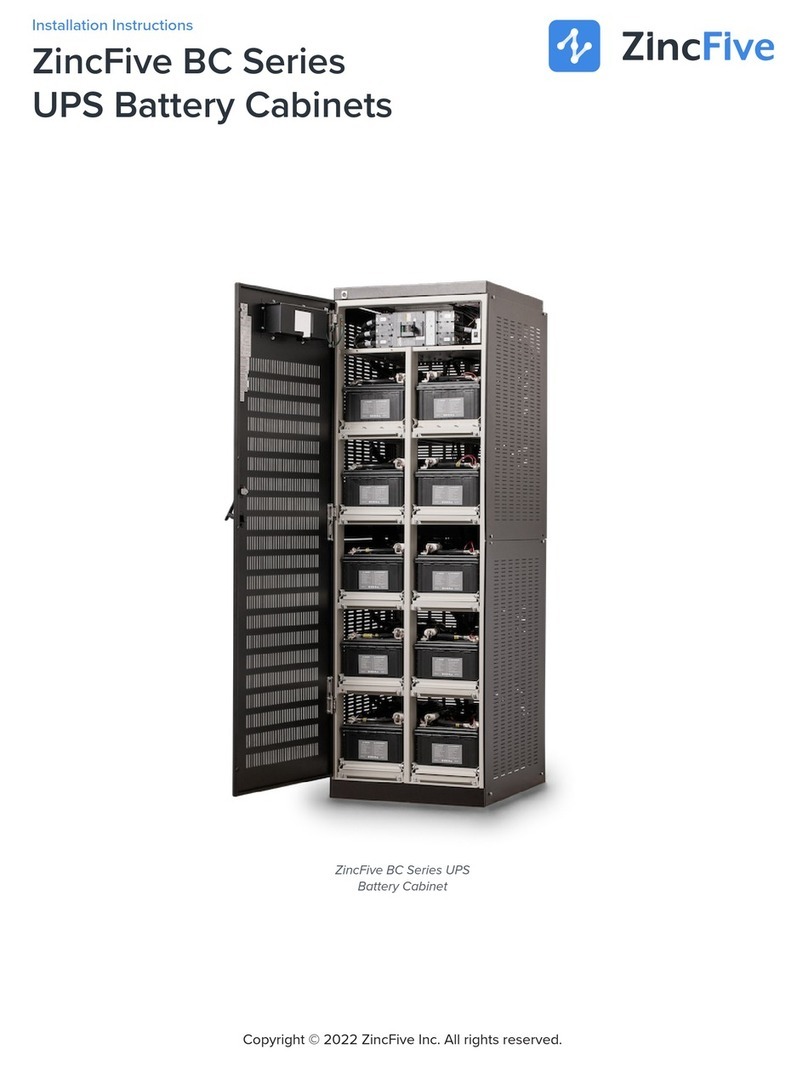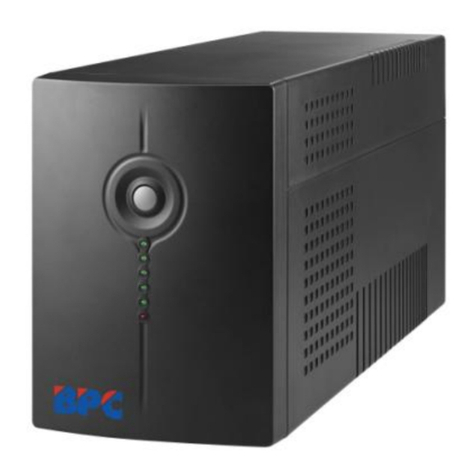User’s manual 8 UPS EXA 1.1-1.5-2.2-2.6-3.2
5Electrical Installation and First Start Up
We advise you to follow the ste s below ex lained for greater safety:
1. Switch off all the devices (Personal Com uter or other electronic devices) that need to be su lied by the
UPS.
2. Connect the UPS In ut socket to the AC line outlet Through the Personal Com uter su lying cable. It is
mandatory to ground the AC line outlet according to the Safety Standards. Carefully check the grounding,
make sure that the utility ower is available, and that its range falls within the UPS s ecifications (refer to
the “S ecifications” cha ter).
3. Switch ON the ON/OFF button on the rear anel and then ress the ON/OFF button on the front anel for 3
seconds: the UPS emits a brief acoustic signal, turns the LCD dis lay on, and erforms a functioning SELF-
TEST. Leave the UPS in Normal mode for at least 4 hours in order to com letely recharge the batteries.
4. Switch the UPS off (by ressing again the ON/OFF button for 3 seconds).
5. Connect the devices to be su lied to the UPS out uts, by using only the included cables. Be sure all the
devices have the main switch in ON osition.
6. Turn on the UPS again. Check that it starts working correctly and it doesn’t signal any sort of anomaly.
Moreover be sure that all the devices connected to the UPS out uts are working correctly. By LCD dis lay
check if the Out ut load ercentage is less than 100%; otherwise it is necessary to remove art of the Out ut
load.
7. Simulate a black-out by removing the AC In ut line. The UPS starts working in Battery mode. Moreover the
UPS emits a brief acoustic signal every 10 seconds.
8. Be sure that all the devices connected to the UPS out uts are working correctly and the UPS doesn’t signal
any sort of anomaly.
9. Restore the AC In ut line: after few seconds the UPS turns back in Normal mode.
Before using EXA normally, leave it in Normal mode in order to charge the batteries com letely as s ecified at
oint 3. The batteries reach the 90% of their ca acity after about 4 hours of recharge.
It is compulsory to ground/earth the UPS according to the Safety Standards.
Risk of electric shock at the Output lines if the UPS is ON, even when the UPS is not
connected to AC utility line.
Risk of electric shock at the Output lines while the unit is connected to the AC utility
line.
Risk of electric shock: do not remove the cover. The UPS contains internal parts, which
are at a high Voltage and are potentially dangerous, capable of causing injury or death
by electric shock.
There are no internal parts in the UPS that are user serviceable. Any repair or
maintenance work must be performed e clusively by qualified technical personnel
authorized by TECNOWARE. TECNOWARE declines any responsibility if this warning is
disregarded.
Disregard for these warnings may lead to a risk of electric shock to operators.
